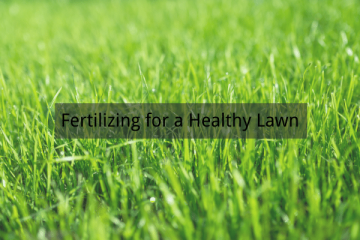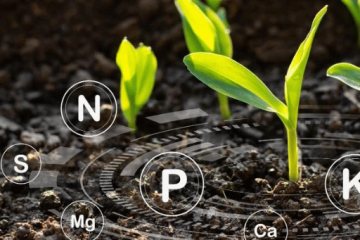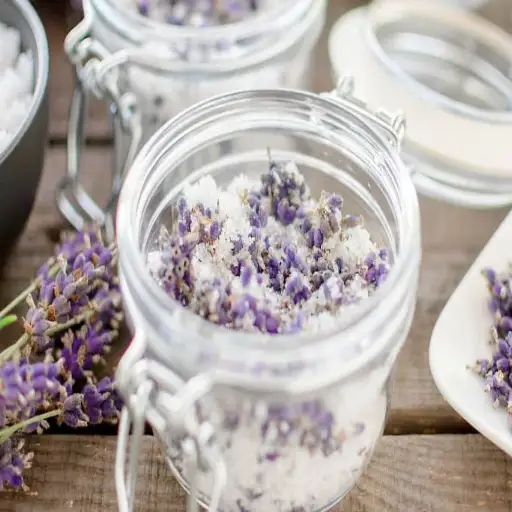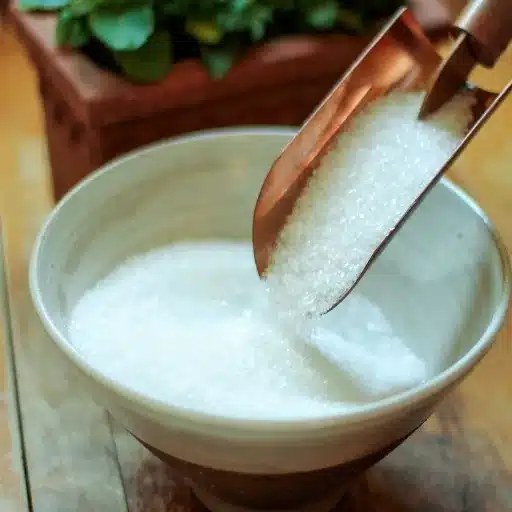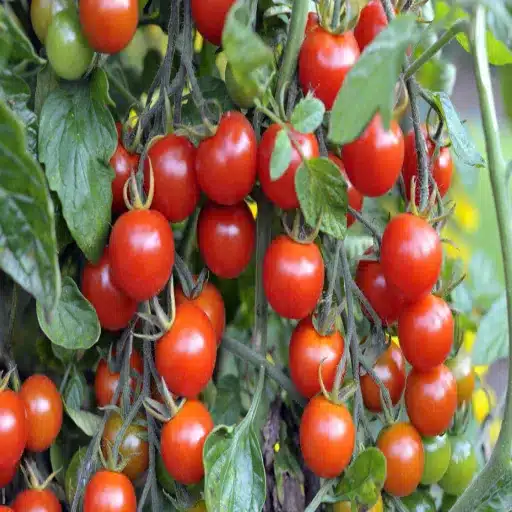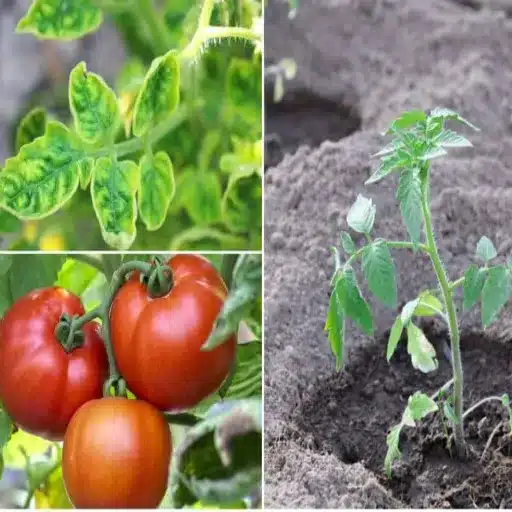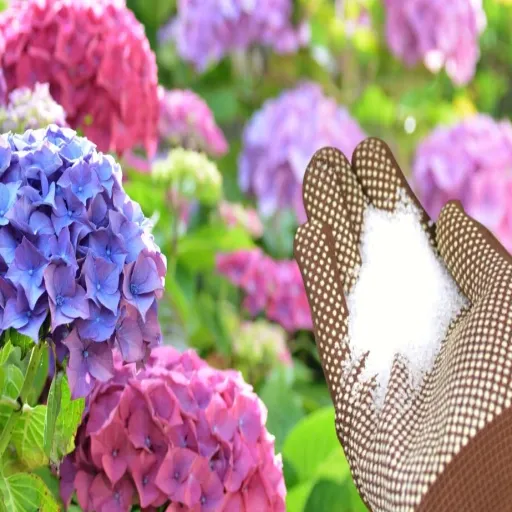Gardening enthusiasts and plant caretakers are constantly searching for methods to enhance plant health and promote robust growth. Among the varied tools and supplements used in gardening, Epsom salt—particularly Lavender Epsom salt—has garnered attention for its potential benefits in plant cultivation. But is it effective, and how does it work? This article dives into the science and practical applications of using Lavender Epsom salt for plants. We will explore its components, its reported advantages, and whether it aligns with professional horticultural practices, providing you with a detailed framework to make informed decisions for your garden’s health.
Is It Safe to Use Lavender Epsom Salt on Plants?
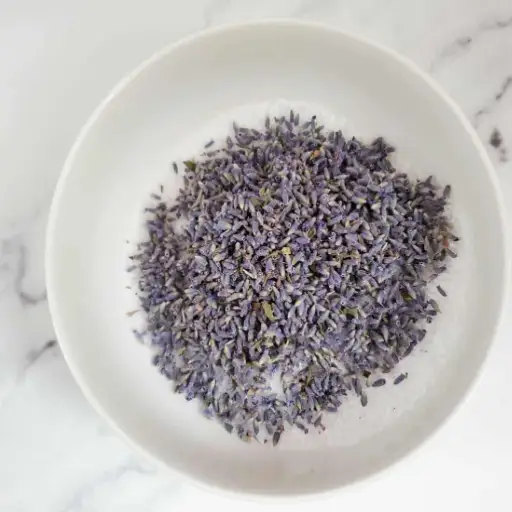
Potential benefits of using Lavender Epsom Salt in gardening
The use of magnesium sulfate lavender Epsom salt touts two favorable properties. First, it comprises magnesium sulfate (MgSO₄·7H₂O) augmented with lavender oil, as well as magnesium epsom and lavender salt. Thus, lavender epsom salts have soothing properties while being highly beneficial to plants. Provided there is adequate precision in the application, lavender epsom salts are favorable to plants in the following ways:
- Boost In Magnesium: Magnesium is pivotal for the synthesis of chlorophyll—the fundamental compound for photosynthesis. Without an appropriate supply of magnesium, a plant can face chlorosis, stunted growth, and less yield. Lavender epsom salt has magnesium in a soluble form which can be directly absorbed by the foliage or roots, which makes it highly accessible to the plant.
- Boost In Nutrient Absorption: Epsom salts sulfate (SO₄²⁻) assists in the absorption of nitrogen and phosphorus, both of which are crucial for any plant growth. This is especially beneficial for soils that are found to be lacking in nutrition.
- Stress Relief: The lavender diffuser epsom salt can withstand stressful environmental conditions like drought, high temperatures, etc. by using magnesium supplementation. While the lavender smell is often associated with a good scent, they also provide mild pesticide repellant.
- Neutral pH: Magnesium sulfate does not alter the acidity or alkalinity of soil, making it suitable for a wide range of soil types.
While Lavender Epsom salt has its observable advantages, it is crucial to perform soil tests first to ascertain magnesium deficiencies which will justify its application set aside. Following proper dosage guidelines and paying attention to the specific needs of the plant will ensure maximum efficacy of gardening methodologies with Lavender Epsom salt.
Possible risks and precautions when applying Lavender Epsom Salt to plants
- The Dangers of Lavender Epsom Salt: Magnesium Toxicity and Other Impacts Lavender Epsom salt has its uses, however excessive use of it can result in an accumulation of Magnesium which can interfere with the effective uptake of other critical nutrients like calcium and potassium. There is a recommended threshold that can be followed. For soil drenching, the use of lavender Epsom salt should be limited to 1-2 tbsp per gallon of water. For foliar spraying, 1 tbsp per gallon should suffice and should be done every two weeks. Always evaluate the soil results before applying to ensure that there is sufficient magnesium present.
- Water And Pollution Contamination: How Magnesium Can Impact Plants Other plants can be equally affected like marijuana and beans which are quite sensitive to salt and magnesium. Therefore it is recommended that lavender Epsom salt only be used when it is direly needed and in conjunction with a comprehensive thorough soil test.
- Changing The pH Balance Of The Soil: Altering the soil acidity level can be dangerous to plant growth. Regular monitoring of alkalinity and acidity levels should be standard if plants are to be maintained for a prolonged time
- Water Contamination Risks: Overuse of Lavender Epsom salt increases the likelihood of magnesium contamination which ultimately results in the contamination of water systems. To prevent heavy rainfall, always stick to the calculated dosage and never exceed it.
So, if the soil doesn’t lack magnesium or sulfur, then adding Lavender Epsom salt would not help and could be a waste of money or aggravate the imbalance. Complete tissue tests should be done first to create an initial magnesium deficiency base. The ideal range for plant requirement is 25-50 ppm. Following these steps allows the safe and effective application of Lavender Epsom Salt and gives the added advantage of ensuring the salt is used where it is needed.
How Can You Use Lavender Epsom Salt to Help Your Plants?
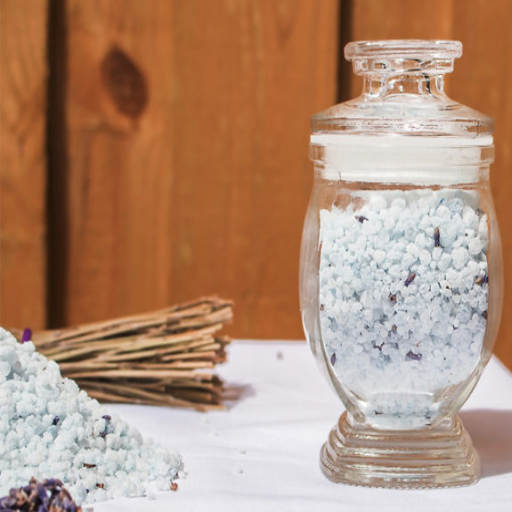
Proper application methods for Lavender Epsom Salt in the garden
Always remember to use Lavender Epsom salt correctly in the garden to maximize plant health, it is one of the basic guidelines for using it effectively. Typically, to create a foliar spray and soil drench, Lavender Epsom salt should be dissolved in 1–2 tablespoons and 1 gallon of water. The lavender Epsom salt should be sprayed directly on the leaves for quick absorption and great effectiveness. This method is known as foliar spray and should be done preferably in the early mornings or late evenings when the temperature is cooler. For applying it on the soil, the solution should be spread evenly around the root zone and should not be overly applied.
During the growing season, crops like tomatoes and peppers can be added 1 tablespoon of Lavender Epsom salt around the base of the soil where they are seeded every 4-6 weeks while making sure it is properly covered in the soil without harming roots. Roses can be watered with 1/2 cup of Lavender Epsom salt mixed with water around the plant in early spring before their growth cycle begins.
Before you apply anything, it is necessary to check if there is a magnesium deficiency. This can be confirmed through soil tests where magnesium levels should be less than the recommended range of 25–50 ppm, depending on the crop type. Overapplication may cause issues such as nutrient imbalance or leaching which is why one must always follow guidelines, review the soil conditions, and aim to keep the plants as healthy as possible.
Recommended dosage and frequency of use for different plant types
- Vegetables: Strain the application of magnesium sulfate (Epsom salt) to 1-2 tablespoons every 2-4 weeks in a gallon of water and use it as a foliar spray during the growing season. For Soil application, it can range from 10-20 lbs each period of a 1,000-square-foot area based on soil test recommendations.
- Fruit Trees: Apply a magnesium sulfate dose of 1/2 to 1 lb for every tree. Distribute the dosage evenly under the tree canopy and irrigate thoroughly. It should be done once in the early spring season and if needed, again in mid-summer. Foliar applications may also be used at a concentration of 1 tablespoon per gallon of water.
- Flowering plants: Mix 1 tablespoon of magnesium sulfate in a gallon of water and use it as a monthly drench around the plant base or foliar spray every 3-4 weeks.
- Lawns: Magnesium sulfate should be broadcasted in soils that are magnesium deficient at the rate of 10-15 lbs per 1,000 square feet annually. Soil tests will help determine other treatments suggested for lawns in the spring during growth or fall.
- Container plants: Apply once a month for thinning plants using 1 teaspoon per gallon of water. Will have to modify for plant sensitivity and potting mix composition.
Magnesium is necessary for chlorophyll production and photosynthesis, and the rates recommended align with standard agronomic practices for maintaining healthy plant development without risking toxicity. Confirm rates with soil testing to adjust for specific soil conditions and prevent overapplication, which could disrupt nutrient ratios or contribute to runoff pollution.
Combining Lavender Epsom Salt with other fertilizers and nutrients
It is necessary to remember that combining Lavender Epsom Salt with other fertilizers and nutriceuticals needs to be done carefully to avoid nutrient lockout or any chemical reactions that can be harmful to plants. Lavender Epsom Salt is magnesium sulfate (MgSO₄·7H₂O) and is very soluble and can be combined with most fertilizers as long as the fertilizers are properly prepared beforehand.
- pH Adjustment: Adjust solutions to 6.0-7.0, where magnesium and sulfate are most available. Magnesium and sulfate are best in those values so make the necessary adjustments with buffers when adjusting with other nutrients.
- Never combine with anything containing calcium: Magnesium sulfate is highly soluble and can precipitate when mixed with calcium nitrate or other calcium compounds precipitate when mixed or combined with insoluble salts. Call calcium products directly and separately, do not make direct combinations.
- Pump Magnesium But Sustain Timelapse: the sedative effects produced by magnesium probably calm down the muscles solely as the ions are more or less passive in the relaxation of membranes obtaining particles of potassium and also calcium. The wipes division when fertilizing should be liquids on which absorbent pull out the organic components and establish maximum height.
- Interaction with Micronutrients: Over-application of magnesium can interfere with the uptake of other cations. Using blend soil or tissue testing confirms when trapped potassium, calcium, and nutrient balance are available.
All components and processes should balance each other or free the whole system from overweight partial sense. Everything does but requires less control so free shapes. This way, Lavender Epsom Salt can be effectively integrated into a broader fertilization strategy when these factors are met.
Which Plants Benefit Most from Lavender Epsom Salt?
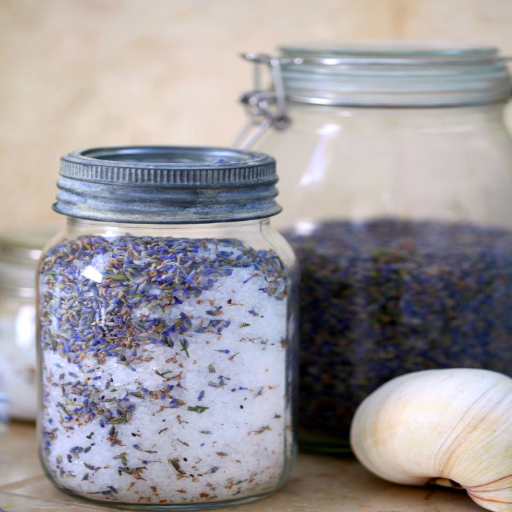
Identifying magnesium-loving plants that thrive with Epsom Salt treatments
As far as I can tell, plants like tomatoes, peppers, roses, and other flowering or fruiting plants gain the most advantages from treatments that apply Epsom Salt. These plants readily uptake magnesium during the active growth or bloom period. For example:
- Tomatoes and Peppers: For yellowing leaves with no underlying disease, increasing magnesium supplementation will help avoid a deficiency and bolster fruit development.
- Application rate: Magnesium deficiency symptoms like yellowing leaves can be solved by 1 tablespoon of Epsom salt every two weeks or adding it into the soil during planting.
- Roses: Magnesium aids in chlorophyll synthesis so the quality and color of the flower can be enhanced.
- Application period: 1/2 cup at the base of roses monthly during the blooming period season.
- Leafy Greens: Crops such as spinach or Swiss chard have healthy green foliage thanks to sufficient magnesium levels.
- Application rate: 1 teaspoon of water-soluble Epsom salt dissolved in water during regular watering times.
These recommendations are provided based on the assumption of ideal soil conditions, and soil tissue testings are highly recommended to avoid overapplication. Lastly, the supplementation of magnesium needs to be done in conjunction with broader nutrient management strategies to ensure a balance between all critical elements.
Using Lavender Epsom Salt for specific plant problems and deficiencies
To remedy particular plant issues and deficiencies with Lavender Epsom Salt, I suggest adjusting the strategy depending on the problem and the type of plant. Lavender Epsom Salt, which is mostly composed of magnesium sulfate, is very useful in treating a magnesium or sulfur deficiency, which causes most of the leaves to turn yellow, or inhibit stunted growth.
- A remedy for a magnesium deficiency: Dissolve 1 tablespoon of Epsom Salt in 1 gallon of water. Magnesium sulfate should be applied directly to the soil at the base of the plant or sprayed on foliage every two weeks. This way, the plant can absorb the magnesium much more efficiently.
- A remedy for a sulfur deficiency: Sulfur is important for constructing proteins and catalyzing enzymes. Use the same dilution rate (1 tablespoon per gallon of water) but concentrate on enhancing the availability of Sulfur with soil applications.
- Using Epsom Salt to treat yellowing leaves on ornaments: Instead, Epsom salt can be sprayed on the leaves diluted with water at the ratio of one teaspoon per quart for fast relief. Checking the soil pH on most plants as stated should be from 6.0 – 7.5, to ensure nutrients can be absorbed.
Evaluating soil and tissue should thus be done before applying to confirm magnesium sulfate supplementation and avoid any nutrient discrepancies. Plants can suffer from poor health if nutrients are added in excess. Epsom Salt should always be part of an integrated nutrient management plan based on the targeted crops and crop conditions.
Are There Any Plants That Should Not Be Treated with Lavender Epsom Salt?
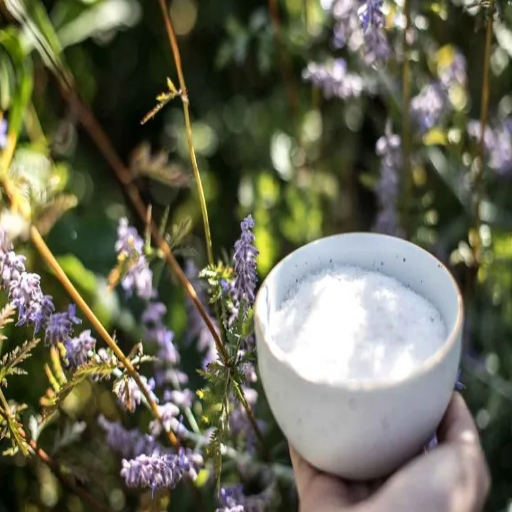
Plants sensitive to magnesium sulfate or lavender scent
Some plants may react adversely to magnesium sulfate or the scent of lavender and are better off not being treated with Lavender Epsom Salt. Such species are rosemary and thyme which are high in magnesium intolerance and may suffer from stunted growth. Also, beans and spinach may have soil nutrient mosaic problems if these plants are left unchecked, especially with high magnesium-containing soils.
- Magnesium need: Ensure the plant species differ in their ability to grow and prestige in a magnesium-rich environment. Soil containing magnesium amounts greater than 200 ppm should not be made available.
- Lavender scent action: Refrain from use that does not appreciate polluting environments, especially those that are free of human-made chemicals.
- pH Compatibility: Soil pH has to be further checked on the pH scale since it needs to be in the ideal range which is 6.0-7.5 for bio-nutrients to be available after magnesium sulfate treatment.
Certain precautions are needed not just on these subjects but especially at the intersection of all at once. That is, do not use treatments unless they are known to be neutral and only as part of an integrated approach for the most effective use.
Alternative treatments for plants that don’t respond well to Lavender Epsom Salt
If there is a poor response when Lavender Epsom Salt is used, then consider these alternative treatments:
- Calcium Nitrate (Ca(NO3)2): This compound is known to calcium and nitrate nitrogen which needs roots that can absorb considerable nutrients. Use at a rate of 1-2 tablespoons per gallon of water with a soil pH of 6.0 – 7.0 for optimum absorption.
- Chelated Micronutrient Mix: If plants show a deficiency in elements such as iron, zinc, or manganese, use chelated forms to improve bioavailability. Follow the instructions, but usually at a concentration of 0.5-1 gram per liter of water.
- Organic Compost Tea: For wide-ranging fertilization, apply compost tea which is made by soaking well-aged compost in aerated water. This promotes microbial growth and better structure of the soil. Apply as a drench at a ratio of 1 part tea to 10 parts water.
- Gypsum (Calcium Sulfate): This is perfect for soils with magnesium in excess or compacted soil issues. Gypsum supplies calcium for better structure of the soil and retrieval of sodium. Applying rates vary, but usually are between 10-50 pounds per 1,000 square feet.
When looking for a different method to treat a problem, pay attention to the nutrient needs and soil chemistry of the plant in question. Always analyze the soil to determine its lack or excess, while consulting the standard procedures of agriculture for dosage and methods of application to avoid mistakes. This is in addition to the extra measures that should be taken to integrate them with the rest of the measures for controlling the crop to enhance plant health and productivity.
How Does Lavender Epsom Salt Compare to Other Plant Treatments?
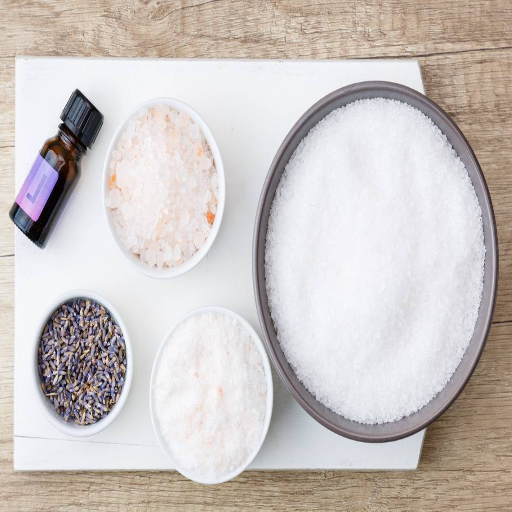
Lavender Epsom Salt vs. traditional fertilizers and soil amendments
Lavender Epsom Salt has some clear advantages and different uses than typical fertilizers and soil amendments. Unlike synthetic fertilizers, which mainly provide macronutrients such as Nitrogen (N), Phosphorus (P), and Potassium (K), Lavender Epsom Salt serves as a natural source of magnesium and sulfur, secondary nutrients. Magnesium is needed for the synthesis of chlorophyll and photosynthesis, while sulfur is vital for the synthesis of proteins and improving flavor in plants. Both are important elements. Lavender Epsom Salt, by nature, is richer in magnesium and sulfur compared to other substitutes.
From a more technical angle, Epsom Salt dissolves in water easily which makes it easy for foliar application or for addition to soil. Recommended dilution rates for lavender Epsom Salt are 1-2 tablespoons per gallon of water for foliar feeding. This should be done monthly during the season of growth. This comes in great comparison with granular fertilizers which tend to take much longer to dissolve in the soil, unlike Epsom Salt. Lavender Epsom Salt does not change the pH of the soil which is beneficial because, on the other hand, amendments like lime or sulfur tend to alter the pH levels.
Lavender Epsom Salt should only be used selectively, and cannot fully replace comprehensive fertilizers or amendments that address other nutrient deficiencies. The best time to tdo his is after a soil test has been done, and the results show a clear deficiency of magnesium or sulfur.
Combining Lavender Epsom Salt with other natural gardening methods
With Lavender Epsom Salt, I know how to balance and manage nutrients with the already existing natural gardening techniques I use. For instance, I buy compost and use well-rotted organic matter as a base for soil enrichment, or do composting myself. Composting and other gardening methods ensure broader soil nutrient ranges are covered, while Lavender Epsom Salt can help in magnesium (Mg) and sulfur (S) soil deficiencies through soil testing.
- Foliar Applications Dilution Rate: Effective absorption while preventing excessive accumulation is attained by using 1-2 tablespoons per gallon of water during the growing season. This should be done once a month.
- Magnesium-Selective Deficiency Cutoff: Photosynthesis and enzyme level activities can be attained by soil magnesium with less than 50-70 ppm, supplementing is ideal for parts per million.
- Integration with Mulching: While Lavender Epsom Salt is applied separately for nutrients, wood chips, and straw do a great job in mulching by retaining soil water.
To have sustainable growth, a low risk of over-application is ideal. This and regular monitoring ensures that the long-term health of the soil is optimally balanced.
Reference sources
Frequently Asked Questions (FAQs)
Q: Can you use Epsom salt on plants?
A: Yes, you can use Epsom salt on plants. Epsom salt, which is magnesium sulfate, can be beneficial for many plants, especially those that need magnesium. However, it’s important to use it correctly and not overdo it. Epsom salt can be used as a soil amendment or as a foliar spray for plants.
Q: How do you use Epsom salt on plants?
A: To use Epsom salt on plants, you can either mix it into the soil or create a foliar spray. For soil application, add 1 cup of Epsom salt per 100 square feet of garden bed. For a foliar spray, dissolve 1 tablespoon of Epsom salt per gallon of water and spray it on the plant’s leaves. It’s best to apply Epsom salt every 4-6 weeks during the growing season.
Q: Is lavender Epsom salt the same as regular Epsom salt for plants?
A: No, lavender Epsom salt is not the same as regular Epsom salt. Lavender Epsom salt often contains lavender essential oil or fragrance, which may not be beneficial for plants. For gardening purposes, use plain Epsom salt, which must be magnesium sulfate without any additives.
Q: What plants benefit from Epsom salt?
A: Many plants can benefit from Epsom salt, especially those that need magnesium. Tomato plants, pepper plants, and roses are known to respond well to Epsom salt treatments. It’s also great for your garden in general, particularly for vegetables and flowering plants. However, not all plants need extra magnesium, so it’s best to research your specific plant’s needs.
Q: How much Epsom salt per gallon of water should I use for plants?
A: A general rule for making an Epsom salt solution is to use 1-2 tablespoons of Epsom salt per gallon of water. This mixture can be used as a foliar spray or for watering plants. For seedlings, use a weaker solution of 1 tablespoon per gallon. Always start with less and observe your plants’ response before increasing the concentration.
Q: Can Epsom salt harm plants?
A: While Epsom salt can be beneficial, overuse can harm plants. Too much magnesium can interfere with the absorption of other nutrients. It’s important to use Epsom salt judiciously and only when necessary. If you’re unsure, it’s best to get a soil test done to determine if your plants need additional magnesium.
Q: Can I use lavender essential oil instead of lavender Epsom salt on plants?
A: It’s not recommended to use lavender essential oil on plants as a substitute for Epsom salt. Essential oils are highly concentrated and can potentially harm or kill plants. Stick to plain Epsom salt for plant care, and avoid using any scented or infused Epsom salts in your garden.
Q: How often should I apply Epsom salt to my plants?
A: For most home gardeners, applying Epsom salt once a month during the growing season is sufficient. However, the frequency can vary depending on the plant’s needs and soil conditions. Some gardeners prefer to apply it every 4-6 weeks, while others might only use it at the beginning of the growing season. Always monitor your plants and adjust the frequency based on their response.

